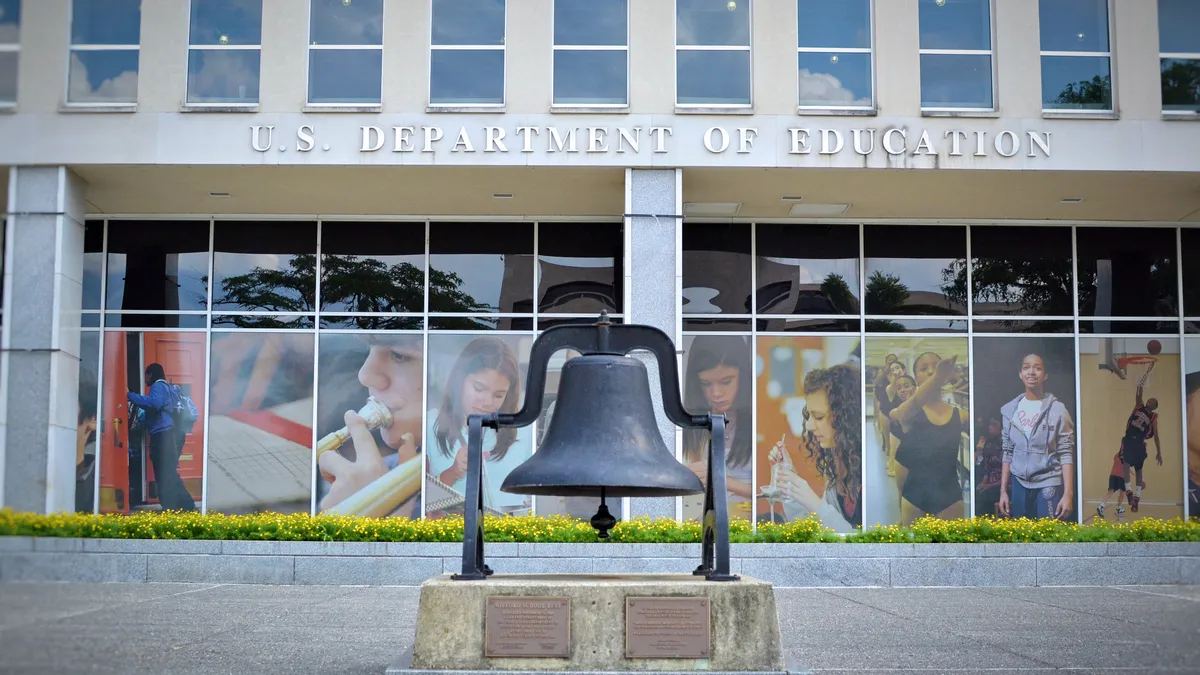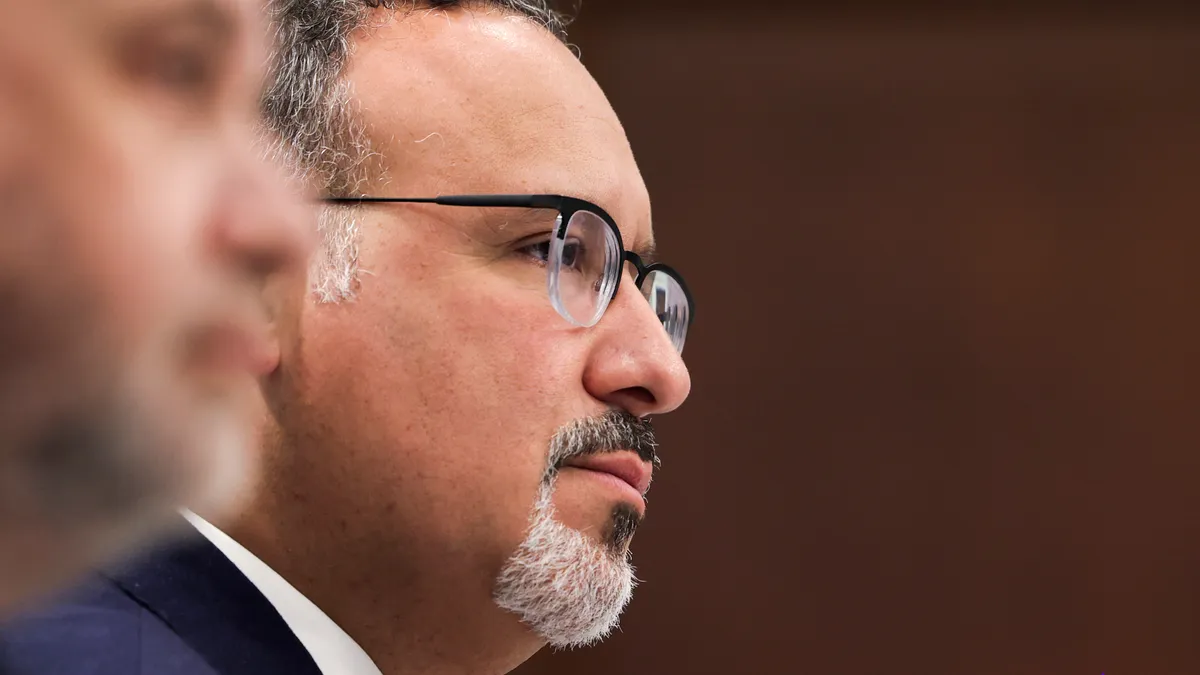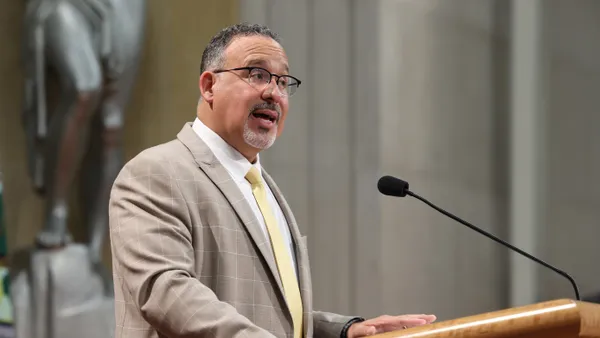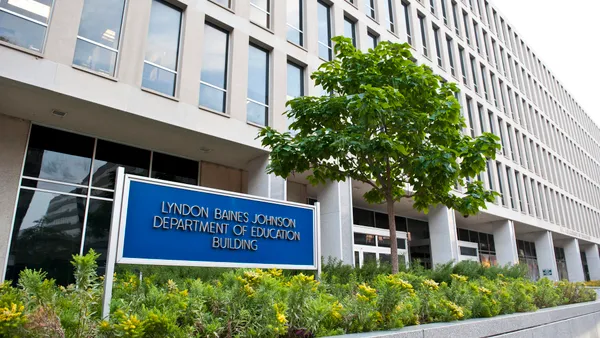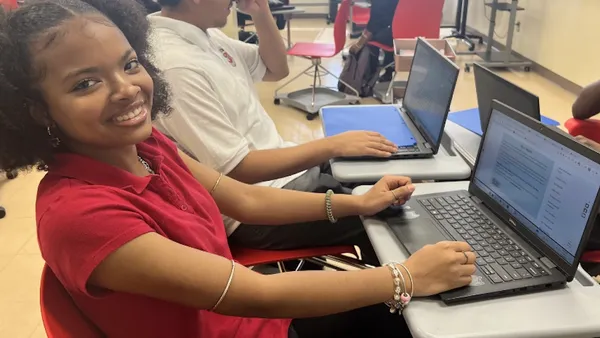Highlights
Growing reach:
With expansion into California, P-TECH will now be in eight states.
Breadth of partnerships:
Over 500 companies and 80 community colleges are partnering with 110 P-TECH schools.
Outlook:
Rising demand for education-industry partnerships and STEM instruction are set to benefit P-TECH in the long run, and New York and Texas have both extended their per-pupil funding formulas to accommodate 9-14 models.
California state Sen. Anthony Portantino tried six times while he was in the state Assembly to introduce legislation that would “erase the line between high school and community college,” he said in an interview.
With P-TECH, he was finally successful at introducing the state to a public-private educational model that allows high school students to earn both their high school diploma and an associate degree within six years and aims to provide industries with more skilled workers.
“Our education model was created when we were a manufacturing and farming economy, and we’ve never changed it,” the senator said in an interview. “You need more than a high school diploma, whether that’s a blue collar certificate or something.”
With $10 million secured in the state budget for P-TECH — which stands for Pathways in Technology Early College High School — California will become the eighth state in which businesses are partnering with school districts and community colleges to ensure more students leave high school not only career-ready, but likely with some college credit on their transcripts.
“P-TECH really came together at an important moment with the economy changing,” Grace Suh, the manager of education programs for corporate citizenship and corporate affairs at the IBM Corp., said in an interview. She notes that between 2007 and 2016, there were 7 million jobs only requiring a high school diploma that “disappeared from the economy. We knew that high school was not enough.”
While IBM developed the framework in 2011, the model has spread to include more than 500 companies affiliated with 80 community colleges and 110 P-TECH schools. P-TECH represents a response to recommendations for more education-industry partnerships. The districts, community colleges and industry professionals collaborate to design a pathway for students that includes “workplace learning.”
The model also gives more students opportunities for paid internships and job shadowing — and, when they’re ready, a job interview. Some students finish their associate's degree along with their high school diploma.
GlobalFoundries, a semiconductor manufacturing company, works with five P-TECH schools in the Tech Valley region of upstate New York and would like to add more. “The success of our company is directly related to the ability of students to develop the skill set needed to thrive in a globally competitive marketplace — and to understand the careers available to them in advanced manufacturing,” MaKenzie Gardner, of GlobalFoundries, said in an email.
Taina Caballero graduated this year from Excelsior Academy, an IBM-affiliated P-TECH school in the Newburgh (New York) Enlarged City School District that also works in partnership with Orange County Community College, part of the State University of New York. She was always drawn to video games and knew she was “tech savvy,” but she never considered her hobby as a pathway to a career. But at Excelsior, she worked as part of an IBM team developing code to run a program that tracks products through a supply chain.
“I learned JavaScript and Java, which I put to use,” Caballero said in an interview. Now interested in the cybersecurity and digital forensics fields, she had 39 college credits when she entered the University of Albany this past fall and had completed most of the introductory classes for her major.
Push for 9-14 models
Policymakers, such as Portantino, have a role in advancing 9-14 models, such as P-TECH, because of myriad state regulations related to high school course requirements, granting credit for workplace learning and how graduation rates are calculated. State leaders can push for removing some barriers so that schools don’t have to apply for multiple waivers. New York and Texas, for example, have extended their per-pupil funding formulas through grades 13 and 14 to accommodate such models.
As a former high school counselor, Karen Amaker often saw students who never considered college as part of their future, maybe because their parents never went, or they didn’t think they could afford it. Since 2014, she been director of the Norwalk Early College Academy in Connecticut, which this year had its first graduating class. Out of 69 seniors, most of them had college credit, and some had completed a two-year degree.
The collaboration, which involves the high school, Norwalk Community College and IBM, means she’s involved in developing curriculum, going on workplace site visits with students, and doesn’t have a “cookie-cutter job” as an administrator,” Amaker said in an interview.
“We really have this great partnership that makes this possible for students,” she said. ”It’s working in the sense that students are understanding the importance of a college education and are committing to that.”
Read More
-
Appropriations bill sets aside over $71B for ed, but is it enough?
By Jessica Campisi • April 9, 2018 -
Building the workforce ready generation: Strategic steps higher ed leaders can take
By Shalina Chatlani • April 9, 2018 -
K-12, higher ed partnerships bring benefits to both
By Amelia Harper • Oct. 8, 2018





